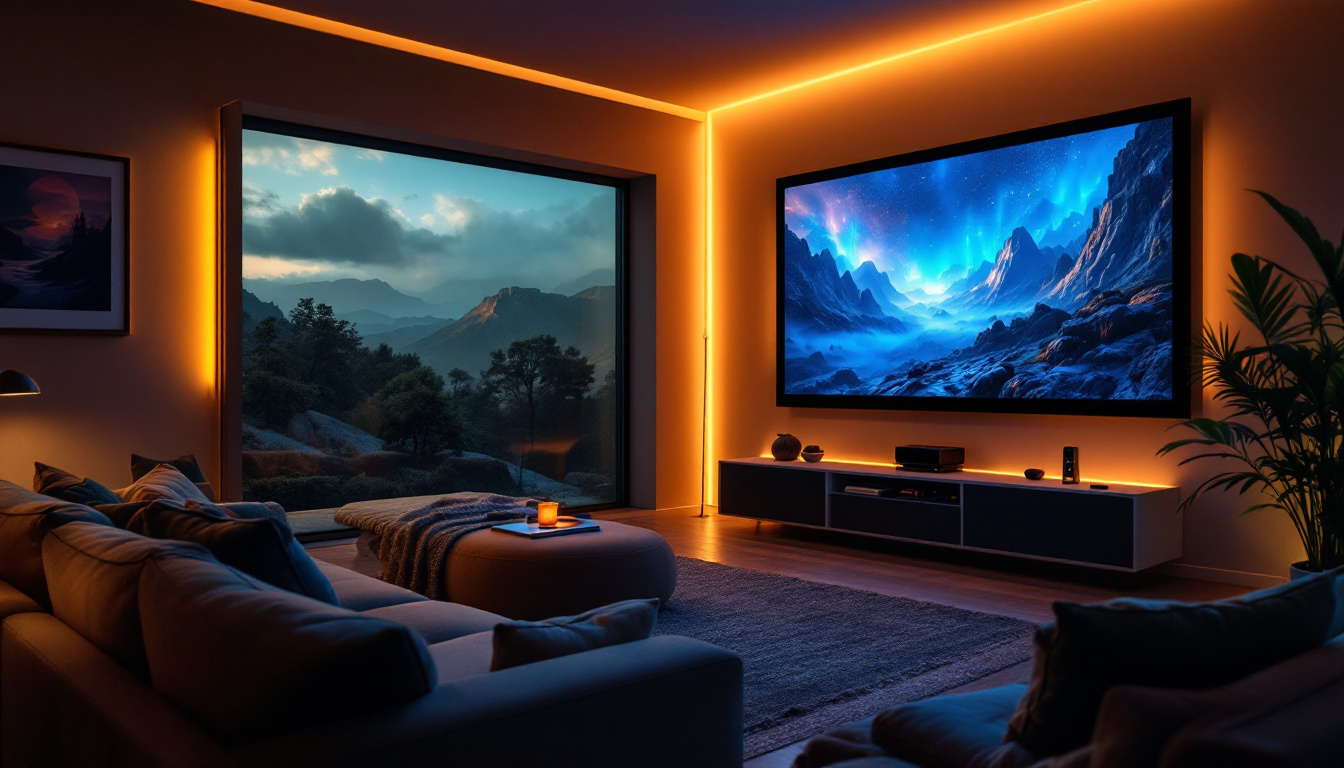Difference Between LED And LCD Monitors: LED Display Explained
In the world of display technology, two terms frequently come up: LED and LCD. While many people use these terms interchangeably, they refer to different technologies that serve distinct purposes. Understanding the differences between LED and LCD monitors is essential for making informed decisions when purchasing a display. This article aims to clarify these concepts, explain how they work, and highlight their respective advantages and disadvantages.
Understanding LCD Technology
LCD, or Liquid Crystal Display, is a technology that uses liquid crystals to produce images. These crystals are sandwiched between two layers of glass or plastic, and when an electric current passes through them, they align in such a way that they either block or allow light to pass through. This process creates the images we see on our screens. The innovation behind LCD technology has revolutionized the way we interact with visual media, paving the way for advancements in various fields, including television, computer monitors, and mobile devices.
How LCD Works
In an LCD monitor, the display relies on a backlight to illuminate the liquid crystals. Typically, this backlight is provided by fluorescent lamps, which emit a consistent light across the screen. The liquid crystals modulate this light, creating the colors and images displayed. This technology has been widely used since the late 20th century and has evolved significantly over the years. More recently, advancements such as LED backlighting have emerged, offering improved brightness and color accuracy. This shift not only enhances the viewing experience but also contributes to the overall energy efficiency of the displays.
Advantages of LCD Monitors
LCD monitors offer several advantages that have contributed to their popularity. Firstly, they are generally more energy-efficient than older technologies, such as CRT (Cathode Ray Tube) displays. This efficiency translates into lower electricity bills and a reduced environmental impact. The longevity of LCD screens also plays a crucial role in their appeal; many models can last for over a decade with proper care, making them a wise investment for both personal and professional use.
Another significant advantage is their slim profile. LCD monitors are lightweight and can be easily mounted on walls or desks, saving valuable space. Additionally, they provide sharp images and vibrant colors, making them suitable for various applications, from office work to gaming. The versatility of LCD technology extends to its availability in different sizes and resolutions, catering to diverse user needs—from compact screens for small workspaces to large displays for immersive gaming experiences or professional presentations.
Disadvantages of LCD Monitors
Despite their many benefits, LCD monitors do have some drawbacks. One notable issue is their limited viewing angles. When viewed from extreme angles, colors may appear washed out or distorted. This can be particularly problematic in collaborative settings where multiple people need to view the screen simultaneously. Furthermore, LCD displays can suffer from motion blur, particularly in fast-paced video content, which can be a disadvantage for gamers and movie enthusiasts. To mitigate these issues, manufacturers have been working on improving the technology, leading to the development of IPS (In-Plane Switching) panels that offer wider viewing angles and better color reproduction.
Understanding LED Technology
LED stands for Light Emitting Diode, and it represents a significant advancement in display technology. While LED displays are often marketed as a distinct category, they are essentially a type of LCD that uses LEDs for backlighting instead of traditional fluorescent lamps.
How LED Works
In LED monitors, the light source consists of numerous tiny diodes that emit light. There are two main types of LED backlighting: edge-lit and full-array. Edge-lit LED displays have diodes positioned along the edges of the screen, while full-array LED displays have diodes distributed across the entire back panel. This configuration allows for more precise control over brightness and contrast, enhancing the overall image quality.
Additionally, some advanced LED technologies, such as local dimming, enable specific areas of the screen to dim or brighten independently. This feature significantly improves the contrast ratio by allowing darker scenes to appear truly black while maintaining brightness in other areas. Such innovations have made LED technology a popular choice for high-definition televisions and professional monitors, where picture quality is paramount.
Advantages of LED Monitors
One of the most significant advantages of LED monitors is their improved energy efficiency compared to traditional LCDs. Since LEDs consume less power, they contribute to lower energy costs and a smaller carbon footprint. Additionally, LED monitors can achieve higher brightness levels, making them suitable for well-lit environments.
Another advantage is the enhanced color accuracy and contrast ratios. Full-array LED displays, in particular, can provide deeper blacks and more vibrant colors, resulting in a more immersive viewing experience. This makes them ideal for activities such as photo editing, gaming, and watching movies. The rapid response time of LEDs also means that motion blur is minimized, which is particularly beneficial for fast-paced video content and gaming, where clarity and precision are essential.
Disadvantages of LED Monitors
Despite their advantages, LED monitors also come with certain drawbacks. One of the primary concerns is the cost. LED monitors tend to be more expensive than traditional LCDs, which can be a barrier for budget-conscious consumers. Additionally, while LED technology has improved viewing angles, some models may still struggle with color accuracy at extreme angles.
Moreover, the longevity of LED displays can be a double-edged sword. While they are generally more durable than their LCD counterparts, the blue light emitted by LEDs can lead to eye strain and discomfort during prolonged use. This has led to increased discussions about the importance of blue light filters and other protective measures for users who spend long hours in front of screens. As technology continues to evolve, manufacturers are working on solutions to mitigate these issues, aiming to enhance user comfort without compromising on the quality of the display.
Key Differences Between LED and LCD Monitors
While LED and LCD monitors share similarities, several key differences set them apart. Understanding these differences can help consumers choose the right display for their needs.
Backlighting Technology
The most significant difference lies in the backlighting technology. Traditional LCD monitors use fluorescent lamps, while LED monitors utilize light-emitting diodes. This fundamental difference affects various aspects of performance, including energy efficiency, brightness, and color accuracy.
Image Quality
LED monitors generally provide superior image quality compared to standard LCDs. With better contrast ratios and color accuracy, LED displays can produce more vibrant and lifelike images. This is particularly noticeable in full-array LED monitors, which can achieve deeper blacks and brighter whites.
Energy Efficiency
In terms of energy efficiency, LED monitors have the upper hand. They consume less power than traditional LCDs, making them a more environmentally friendly option. This efficiency not only reduces energy costs but also contributes to a lower carbon footprint.
Choosing the Right Monitor for Your Needs
When deciding between LED and LCD monitors, several factors should be considered. Understanding the specific requirements for your intended use can help guide your decision.
For General Use
For everyday tasks such as browsing the web, working on documents, or streaming videos, either type of monitor will suffice. However, opting for an LED monitor may provide a better overall experience due to its superior image quality and energy efficiency.
For Gaming
Gamers often require monitors with fast response times and high refresh rates to ensure smooth gameplay. LED monitors, particularly those with high refresh rates and low input lag, are generally the preferred choice for gaming. The enhanced color accuracy and contrast ratios also contribute to a more immersive gaming experience.
For Professional Use
For professionals in fields such as graphic design, photography, or video editing, image quality is paramount. In this case, investing in a high-quality LED monitor with excellent color accuracy and a wide color gamut is advisable. Full-array LED displays are particularly beneficial for these applications, as they can reproduce colors more accurately and provide better contrast.
Future Trends in Display Technology
As technology continues to evolve, so do display technologies. Emerging trends indicate a shift towards OLED (Organic Light Emitting Diode) displays, which offer even greater color accuracy and contrast ratios than LED monitors. OLED technology allows for individual pixels to emit their own light, resulting in true blacks and vibrant colors.
Potential of OLED Technology
OLED displays are gaining traction in various markets, including televisions, smartphones, and computer monitors. The potential for thinner designs, improved energy efficiency, and superior image quality makes OLED a compelling choice for the future of display technology. However, the cost of OLED monitors remains a consideration, as they tend to be more expensive than both LED and traditional LCD displays.
Impact of Quantum Dot Technology
Another exciting development is the integration of quantum dot technology into displays. Quantum dots are tiny semiconductor particles that can enhance color reproduction and brightness. By incorporating quantum dots into LED backlighting, manufacturers can create displays that offer even better color accuracy and vibrancy, bridging the gap between LED and OLED technologies.
Conclusion
In summary, while LED and LCD monitors share similarities, they are fundamentally different technologies that cater to various needs and preferences. Understanding the distinctions between the two can empower consumers to make informed decisions when selecting a monitor. LED monitors generally offer superior image quality, energy efficiency, and overall performance, making them a popular choice for a wide range of applications.
As technology continues to advance, the landscape of display technology will undoubtedly evolve. Keeping an eye on emerging trends such as OLED and quantum dot technology can help consumers stay informed and ensure they choose the best display for their needs. Whether for gaming, professional use, or general tasks, the right monitor can significantly enhance the overall experience.
Discover Cutting-Edge LED Displays with LumenMatrix
Ready to experience the pinnacle of display technology? LumenMatrix is at the forefront of LED innovation, offering a wide array of LED display solutions that cater to your every need. Whether you’re looking to enhance your brand’s visibility, create an immersive environment with an Indoor LED Wall Display, or captivate passersby with a vibrant Outdoor LED Wall Display, LumenMatrix has the state-of-the-art technology to bring your vision to life. From Vehicle LED Displays to Custom and All-in-One LED solutions, our mission is to transform visual communication and engagement. Don’t just take our word for it; check out LumenMatrix LED Display Solutions today and see how we can help you make a lasting impression with clarity and impact.































